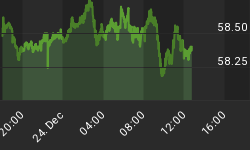New growth theories are a reaction to the neoclassical model that basically sees economic growth as the outcome of increasing homogeneous inputs of labour and capital. This simplistic explanation leads to the conclusion that diminishing returns must eventually set in as additional units of labour and capital render smaller and smaller amounts of output. In brief, diminishing returns emerge. This approach to growth treats technological progress as external to the economic system. What economists call an exogenous factor.
However, the new growth school incorporates technological progress into its analysis, making it more dynamic than the neoclassical mechanistic model. Instead of relying on perfect competition it emphasise profit maximisation, monopolistic competition and economies of scale. Naturally this leads to the conclusion that entrepreneurial activity in taking up innovations and inventions in order to capture economic profits will spur growth and more competition as knowledge of new techniques and innovations spread through the market place.
This has led to the peculiar conclusion that the market will "under-invest" in innovations because no producer can capture the full social benefits of any breakthrough he finances. This 'market failure' not only provides an excuse to create investment loop holes but also a rational for politicians and bureaucrats to start picking winners. There really is nothing new here at all.
Let us now turn to the Austrian school for whom growth is investment -- the material means of production -- which in turn comes from savings. Investment forms a heterogeneous production structure consisting of complex stages of production; the more investment we get the longer the structure becomes as more and more complex stages added to it. Because capital is heterogeneous the market performs the function, through the interest rate, of not only equating the supply of capital with the demand for capital but also determining the capital structure.
Ludwig M. Lackman pointed out that the accumulation of capital leads to an increasing division and specialisation of capital goods that resists the law of diminishing returns. (Capital and Its Structure, Sheed Andrews and McMeel Inc., 1978). Austrian analysis does not overlook the role of institutions or entrepreneurship; on the contrary, it has put conciderable effort into analysing them. Its analysis demonstrates that there is no role for politicians or bureaucrats in picking winners. (We have already suffered enough from the hubris of those politicians and bureaucrats who make the preposterous claim that their knowledge and skills are superior to those of the market place).
The view that entrepreneurs will under-invest if they cannot capture the full social benefits of their innovations is nonsense. This accusation ignores the fact that patent laws were instituted to encourage and protect innovation and invention. One can even go so far as to argue that too stringent patent laws would actually result in under-investment in innovations.
After all, the aim of patent law is to grant the patent holder a monopoly. Moreover, companies do not try to gauge the alleged social benefits of their innovation; their concern is for market acceptance. If the market accepts the innovation then the company will obvious try to profit as much as possible from its investment. One only has to look at the rapid developments in the computer industry in particular and electronics in general to see that the notion of under-investment in technology is completely at variance with the facts.
As for tax loop holes -- why bother. A tax loop hole is a tax concession; the effect is to reduce the company's tax liabilities. To claim that industry needs more tax concessions for investment, research and development is to say no more than the tax burden is too high. In other words, such claims pay homage to Professor Laffer. The solution, therefore, is to cut taxes.
















